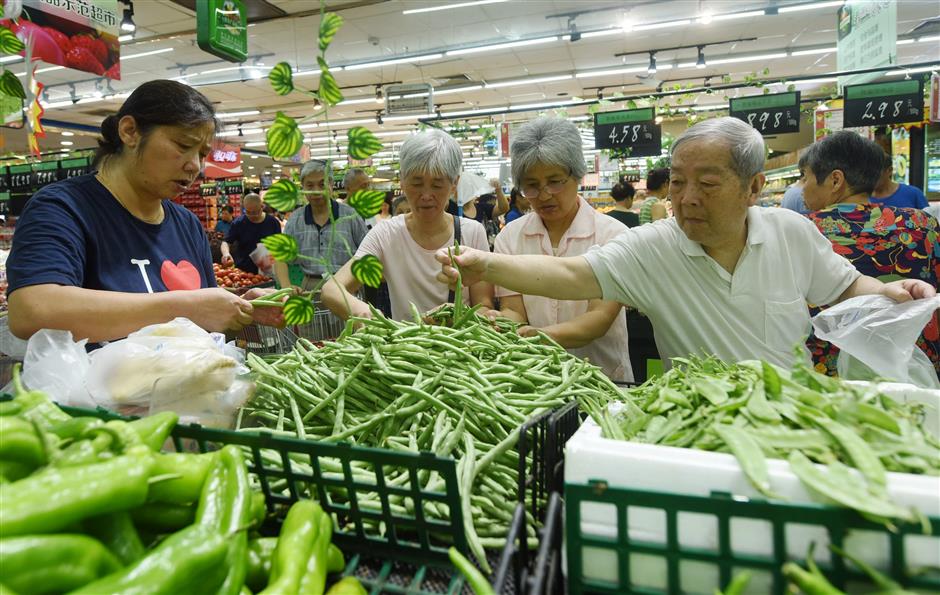China's inflation to stay mild in H2

Customers shop for vegetables at a supermarket in Hangzhou city, east China's Zhejiang Province, on July 10, 2018.
China's consumer price index, a main gauge of inflation, grew mildly in the first six months and stayed below the annual target, as analysts expect a benign figure for the rest of 2018.
Data released Tuesday by the National Bureau of Statistics showed a 2 percent CPI increase in the Jan.-June period, well within the annual target of around 3 percent.
On a month on month basis, the CPI declined 0.1 percent in June primarily due to lower prices of fresh fruits and vegetables driven by abundant supply, said NBS statistician Sheng Guoqing.
Last month saw an uptick in year-on-year inflation growth, with the 1.9-percent rate mostly attributed to carryover effects of price changes in 2017, Sheng said.
The 1.9 percent figure also marked a three-month straight tamed inflation growth of below 2 percent. "The CPI maintained a mild growth rate," Sheng noted.
Liu Xuezhi, a senior researcher with the Bank of Communications, said the steady growth in domestic demand would not kick-start a substantial rebound in CPI.
"Carryover effects will markedly diminish after July, while CPI is expected to climb by around 2 percent year on year for 2018," Liu said.
An annual inflation rate of about 2 percent is attributed to stable demand and slower monetary supply growth and leaves considerable room for monetary policy maneuvering, according to an earlier report by the bank's financial research center.
Commenting on Tuesday's data, Asian investment bank Nomura said China's CPI inflation is likely to stay at a subdued 2 percent in the second half of the year, while producer price index inflation will fall on a high base in the same period last year, a stable oil price and weakening end-demand.
Rising oil prices, which saw Brent crude oil up 64 percent year on year in June compared with a 55 percent gain in May, contributed to the rise in both PPI and CPI, according to Nomura research.
Tuesday data showed China's PPI, which measures costs for goods at the factory gate, rose 4.7 percent year on year in June. In the first half of this year, the PPI increased 3.9 percent from the same period in 2017.
The growth rate beat market expectations of 4.5 percent and was faster than the 4.1 percent rise in May, picking up the pace for three consecutive months, according to the NBS data. Month on month, producer prices edged up 0.3 percent in June, slightly slower than the 0.4-percent rise in May.
NBS data showed oil and natural gas exploration sectors saw the most significant price hike of 32.7 percent last month, followed by oil, coal and other fuel processing at 19.9 percent, and ferrous metal smelting and pressing at 15.1 percent.
"Similar to April and May, the rise of June PPI inflation was again driven by upstream sectors, partly due to a low base last year and higher oil price inflation in June," according to Nomura. "[The PPI inflation is] set to soften in the second half of the year."















